Want to make your garden both stunning and eco-friendly? Native plant landscaping is your answer. It conserves water, supports wildlife, and fits seamlessly into your local climate and wildlife communities. Our article presents an overview of why you’d want to include native plants in your outdoor spaces, choosing the right species, and designing a space that thrives with minimal effort. We’ll show you the some keys to unlocking the secrets of a dynamic and beneficial garden.
Key Takeaways
- Native plant landscaping is a sustainable practice that utilizes indigenous plants to support local ecosystems and reduce water use and maintenance, attracting native wildlife and offering climate adaptability.
- The design of native gardens follows principles such as balance, simplicity, and unity, integrating both aesthetics and functionality to create habitats that benefit pollinators, birds, and other wildlife while reducing water consumption.
- Proper seasonal maintenance of native plants includes minimal pruning, natural pest management, and seed propagation, ensuring continuous health and ecological contribution of the garden’s flora.
Understanding Gardening with Native Plants

Native plant landscaping is the practice of incorporating local flora to create sustainable, bio-rich gardens that require minimal upkeep once established. This method produced great results but assumes a good understanding of the native environment and plant species as well as their advantages over nonnative plants.
Excellent resources such as Wild Ones’s free garden designs and Scott Woodbury’s designs on GrowNative.org can help you in both dipping your toe and mastering this craft.
Remember, when selecting appropriate natives for your area, it is essential that factors like moisture requirements, soil type, sunlight preferences, and how well the plants grow with other native plants are taken into consideration in order to ensure optimum growth.
The Essential Value of Native Plants in Landscaping
Incorporating native plants into landscaping can have a hugely beneficial effect on biodiversity. By providing sources of nectar to pollinators, providing shelter for mammals and food supplies for wildlife, they aid in keeping an interconnected ecosystem alive, which involves many different species. Healthy plant communities also produce healthy soils and can restore depleted and degraded landscapes with the right mix of bacterial and fungal support. Not only do these plants attract insects which support better pollination, but they also provide meals for birds plus natural methods of controlling pests with their presence alone.
To help select the plant varieties that will serve as good additions to one’s garden, having a carefully curated list is key. This list should be based on factors like those mentioned above, but it’s also important to consider how the plants will interact with each other and the local wildlife. This is not a task to be rushed, but rather one that requires thoughtful consideration and research. We suggest you follow the guides on this website or join the Plant Wild community, where you can tap into expert advice and even ask us questions directly!
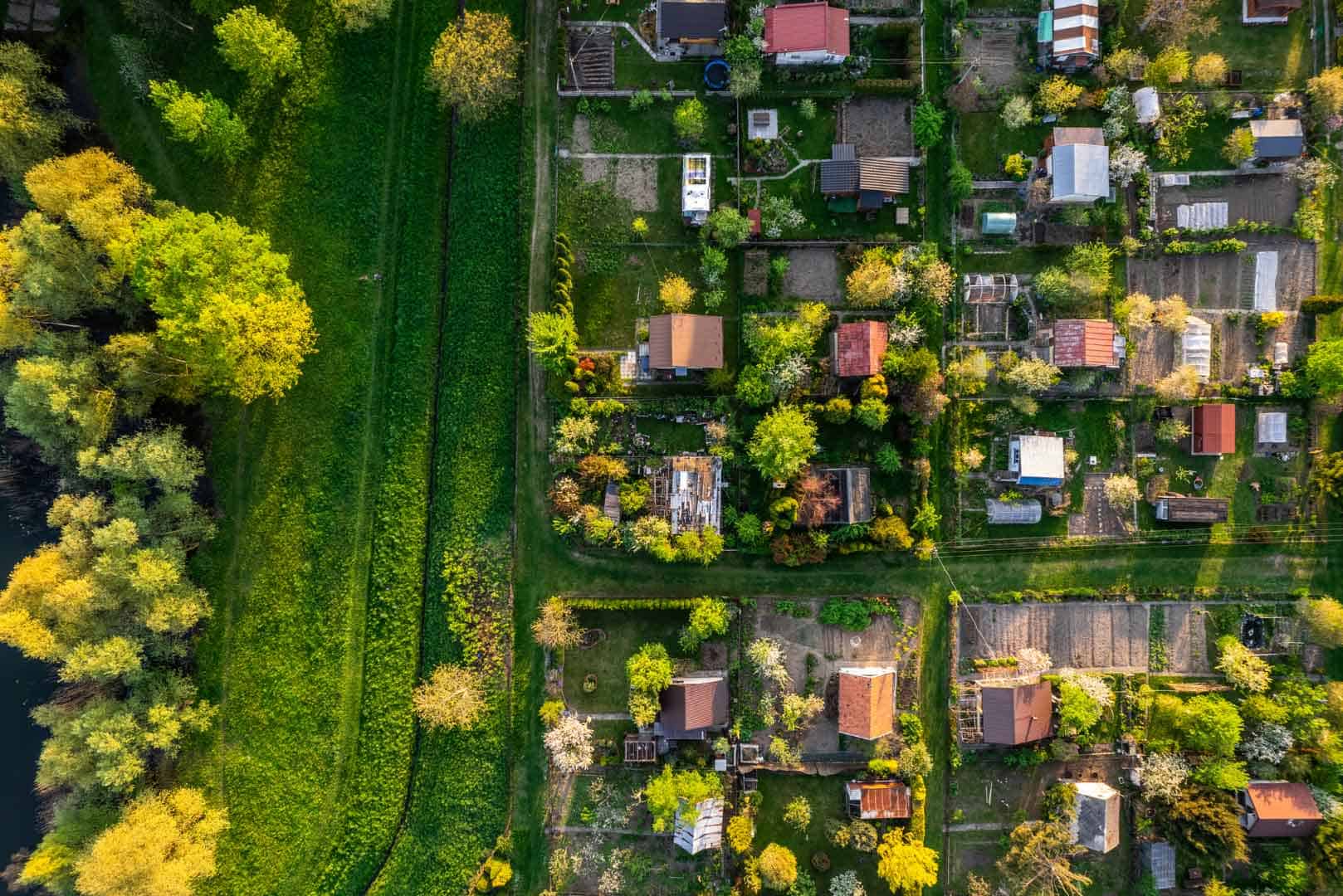
Advantages of Locally Native Over Non-Native Species
Using native species for landscaping can reduce water consumption and labor significantly. In the near and longer term it should also dramatically reduce the number of inputs—whether these are chemical herbicides, pesticides or fertilizers, tilling, mowing, water, pruning, mulching, protecting from weather, or plant replacement. Native plants are specially adapted to local climate conditions which make them resistant to drought, requiring minimal supplemental irrigation. Native varieties also offer a greater benefit in supporting the surrounding wildlife than non-native alternatives. All of this makes incorporating native plant life into gardening beneficial in ways using a non-native or exotic plant palette can’t.
Selecting the Right Native and Flowering Plants for Your Region
Gardening with native plants is a fundamental step in designing an environmentally-friendly landscape. Climate, light exposure and soil type are all very important to consider when choosing the right species for your garden. To gather invaluable information about local flora you can consult this website and our online Plant Wild community or a variety of other excellent resources such as National Wildlife Federation Native Plant Finder, The Xerces Society, Ladybird Johnson Wildflower Center, High Plains Environmental Center, or even blogs like Urban Haven or Native Backyards that specialize on this topic.
Having knowledge of which particular native plants thrive in your local soil types and climate makes selecting suitable specimens easier. Understanding which native plants thrive in your local soil and climate conditions simplifies the process of choosing suitable plants. This is not only crucial for aesthetic reasons but also for enhancing biodiversity. Depending on our geographical location, different soil types may be present at lower elevations compared to higher up in the mountains. Therefore, understanding the water and nutrient needs of our chosen plants is crucial. Proper research and guidelines can definitely assist us in making informed decisions regarding our selection of plants for home landscaping.
And don’t forget that not all native plant species are readily available (a problem that Plant Wild is working energetically to solve!). So be sure to check with nurseries or seed providers before finalizing your list. You may find that a particular plant that meets your needs isn’t readily available, but there is almost always a native alternative.
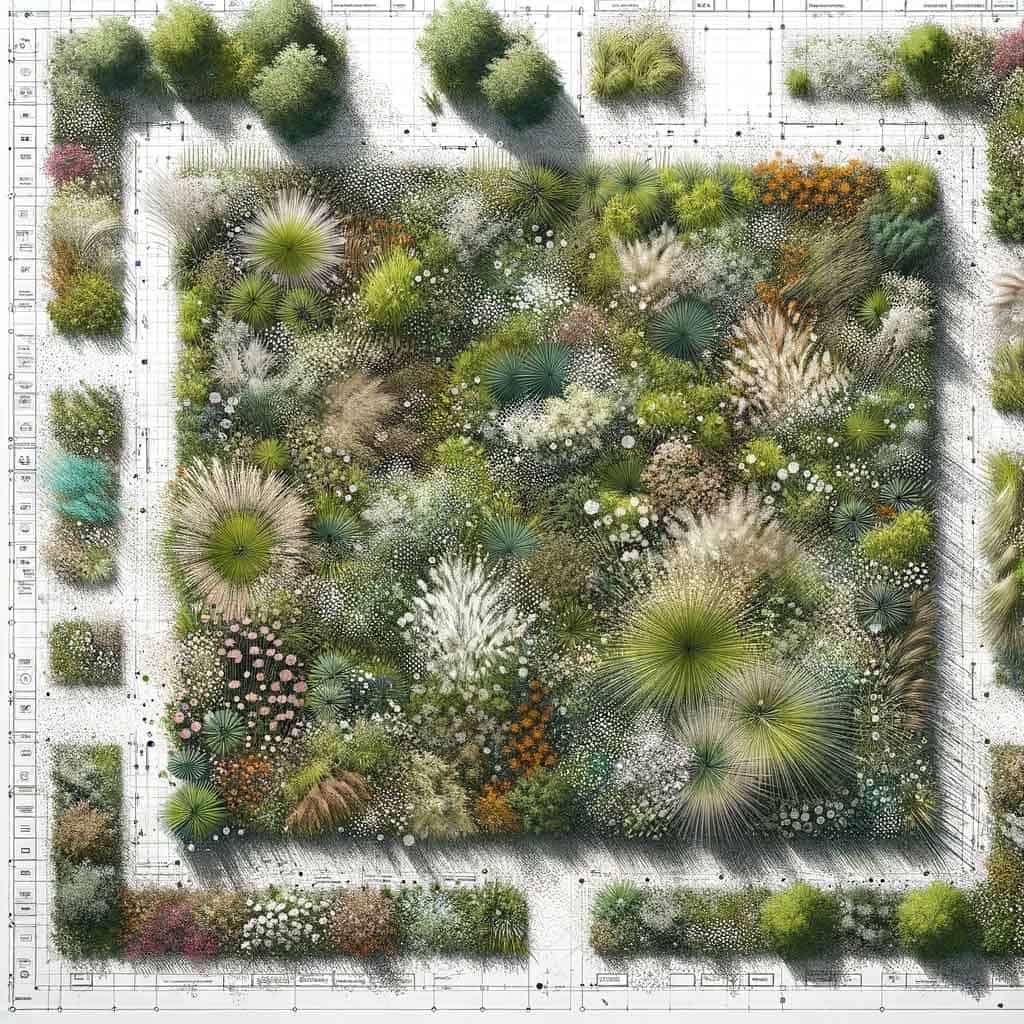
Design Principles for Native Plant Landscaping
Native gardens can be designed to create a visually pleasing environment that works in harmony with the landscape and has a appealing visual structure that lasts throughout the year. To this end, you may want to consider certain design principles that can guide your creation: balance, focalization, proportional repetition, and rhythm. Simplicity, transition, and unity are other concepts that professional designers all use as indicators for how to integrate plant life into an aesthetically desirable landscape. For example, well-respected international designers like Piet Uodolf suggest creating a “matrix” of grasses to serve as the starting point for gardens that both imitate natural landscapes and highlight the unique characteristics of other species. As you can probably tell, there’s no end to the possibilities that landscape design offers. But remember this: you won’t fully enjoy your native plants unless you learn their unique characteristics, and making mistakes is part of the process!
When landscaping, it is important to maintain scale by picking varieties of native plants that will not outgrow their allocated space. Some plants are aggressive spreaders and can dominate slower-growing species. Similarly, some designers use plants whose height reaches no more than half the width of the bed they inhabit, so that they don’t visually crowd a location. Choosing carefully based on sunlight and shade amounts is al shade is paramount in effective garden design. National organizations like Wild Ones provide useful advice, and there are numerous state and local non-profits and universities, as well as botanic gardens, who offer excellent advice. California Native Plant Garden Style from CNPS, University Of Maryland Extension, and Tips From Dyck Arboretum are just a few examples of places you can find inspiration.
Of course you can also hire a landscape designer with expertise in native plants. Thankfully there are more and more designers turning to native plants every day, so finding one is much easier than it was even five years ago.
Planning Your Native Garden Layout
When planning out the design for a native garden, there are a number of things you’ll want to consider. First and foremost is the size of the project—its actual footprint—and understanding what kind of sunlight the area will receive, such as full sun or partial shade. Understanding the soil type is crucial when coming up with a plant list that will thrive under those specific conditions. Whether the soil is sandy loam or clay, it can greatly influence the selection of these natural vegetation options. But in general if you are planting native species in soil that is local (i.e. hasn’t been trucked in from 100 miles away), your soil improvement needs are likely much less than they would be with exotic species.
As native plants tend to grow in small clusters, they naturally fit together in specially designed areas to create a cohesive, visually pleasing aesthetic from the outset. With careful planning and adherence to the steps outlined here, your native garden will flourish and thrive!
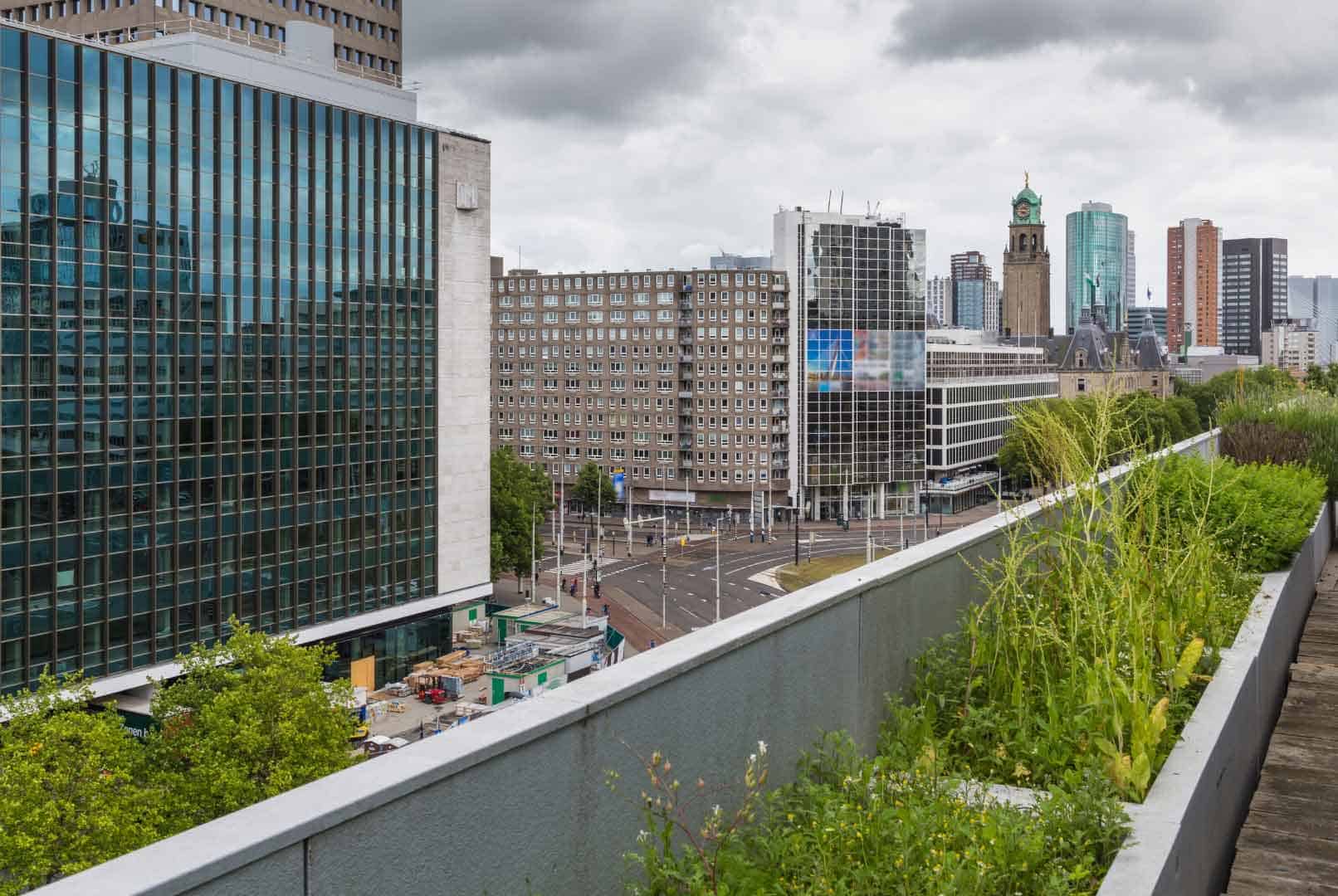
Combining Aesthetics with Functionality
Native plant landscaping requires a delicate balance between aesthetics and functionality. To achieve this, a plant list can incorporate a variety of beneficial attributes: their nectar-rich, pollinator-friendly flowers, foliage that is eye-catching and beneficial as forage for invertebrates, production of seeds and berries for birds and other wildlife, strong root systems that help prevent erosion, and structure that provides protection for animals during winter months. When designing these gardens, a few key guidelines should be followed: appreciate the somewhat random beauty of nature, avoid disrupting existing native plants, ensure your designs flow smoothly and create unity, and be sure the plants “play well together.” By adhering to these principles, you can create eye-catching, functional spaces that utilize local plant life, benefiting everyone involved!
Incorporating Hardscapes and Paths
Incorporating hard surfaces such as pathways and other surfaces into a native garden not only increases visual appeal but also makes it more accessible. This kind of landscaping has several benefits, including cost-efficiency, better water savings, improved resilience to local climate conditions, and reduced maintenance needs.
When it comes to hardscaping in a native garden, a variety of materials are commonly used. This includes flagstone, slate, quartzite, sandstone, concrete pavers, natural stone, brick, and gravel. These hard surfaces can be used to create paths that are both visually appealing and functional. To enhance the overall design of the garden, plants with contrasting textures and colors can be used. This helps to establish structure throughout the landscape while also defining different areas within the garden. Whether you’re aiming for the tranquil simplicity of a Japanese garden or the lush diversity of a woodland garden, the right combination of plants and hardscaping can make a dramatic difference.
For a harmonious integration of hard surfaces in your native garden, consider using plants with contrasting textures and colors. This approach can help establish structure throughout the landscape while also defining different areas within your garden.
Creating Habitat with Native Plants
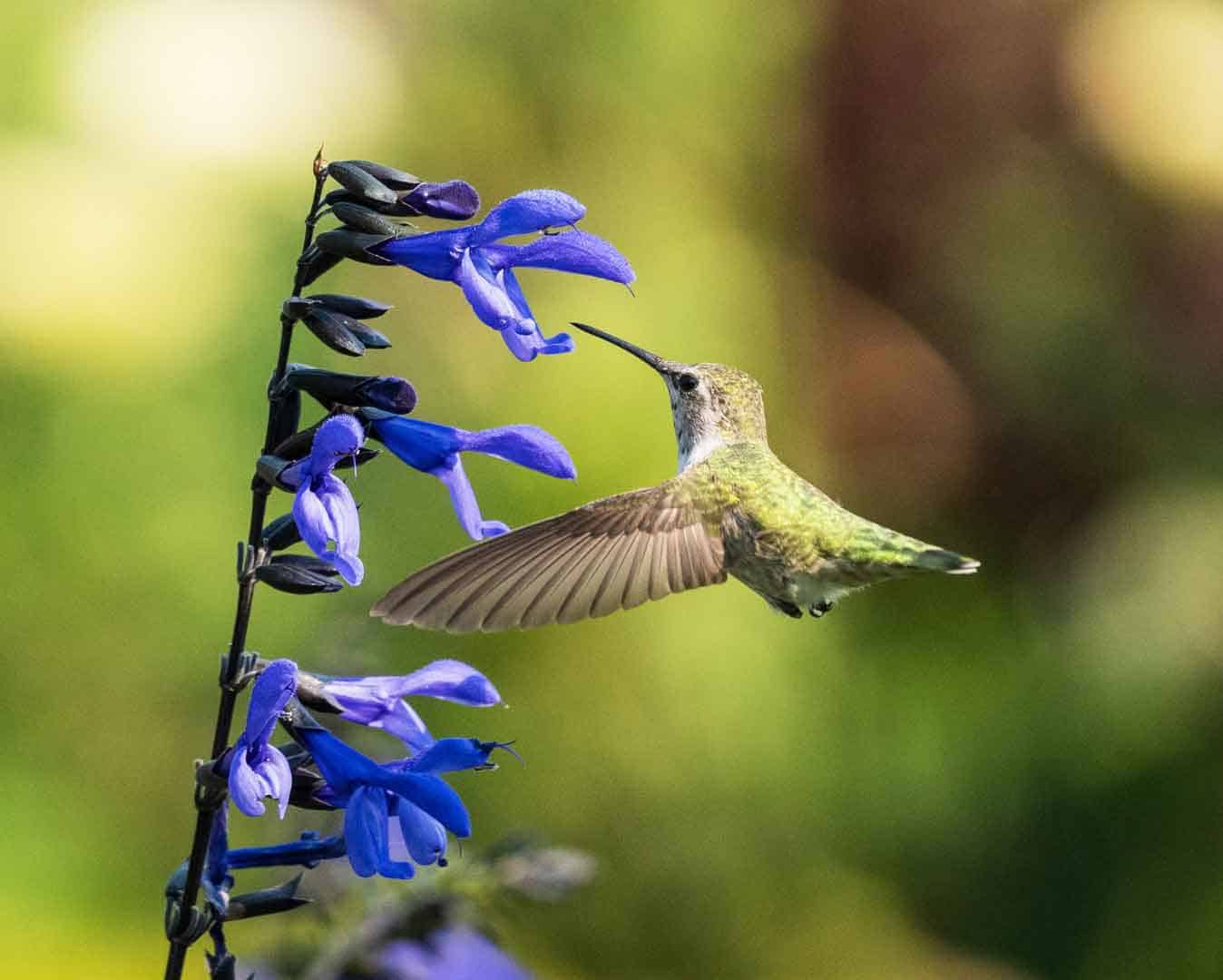
Native plants serve as the foundation for sustaining diverse wildlife and also bring a stunning aesthetic to our gardens. They not only cultivate an environment that’s hospitable to butterflies, bees, moths and hummingbirds, songbirds and other wildlife, but they are essential in maintaining the biodiversity of local ecosystems. Consequently, native vegetation is vital in fostering balance through its habitat-building capabilities—an invaluable resource amidst species loss, water scarcity, and warming weather patterns.
Attracting Pollinators with Native Flowers
Native plants have evolved special shapes which are ideal to attract particular species of pollinators. Moths, butterflies and hummingbirds who prefer tubular flowers are a great example. Many native flowering species, including more readily available plants like Echinacea (coneflower), Agastache, bee balm, butterfly weed, Canna, columbine, or Joe-Pye weed also feature qualities that can make them attractive for gardeners aiming to encourage a single type of insect. Some unique characteristics—like those of milkweeds and cardinal flower—can also also answer the needs of specialist bees or moths, providing key links in invertebrate life cycles. Thus bloom timing is also key: make sure your plant list not only provides the right type of flowers, but a season-long series of nectar-producing blooms.
Choosing Plant Species That Support Birds and Other Wildlife
Native plants offer a crucial service to local bird populations, serving as habitat and sustenance for them. Examples of beneficial species include purple coneflowers, serviceberry trees, flowering dogwoods, eastern redbuds, southern magnolias, and especially native oaks and willows, which both support a huge variety of insects and act as nesting havens too. To create garden that is more bird-friendly, consider including these characteristics: numerous indigenous plant types, natural successions of plants by age and structure, seed production, and nutritious edibles like berries from shrubs or small fruits on vines so they can sustain themselves through colder months.
Building a Balanced Ecosystem
Creating a thriving garden ecosystem begins with native plants. These species are well-adapted to the site conditions and help promote biodiversity, reduce soil erosion, retain nutrients in the soil better than other plant varieties, and offer beneficial interactions between plants, microbes and soils. Native grasses specifically come with many advantages for enhancing an environment’s sustainability while supporting insects and animals that seek out food or habitat therein.
When creating a native plant landscaping plan, it’s crucial to emphasize diversity among all organisms while simultaneously maintaining robust ecological functions. This is, of course, a predictable by-product of selecting locally native plants that coexist in balanced communities in the wild.
Drought-Tolerant Natives and Water Conservation
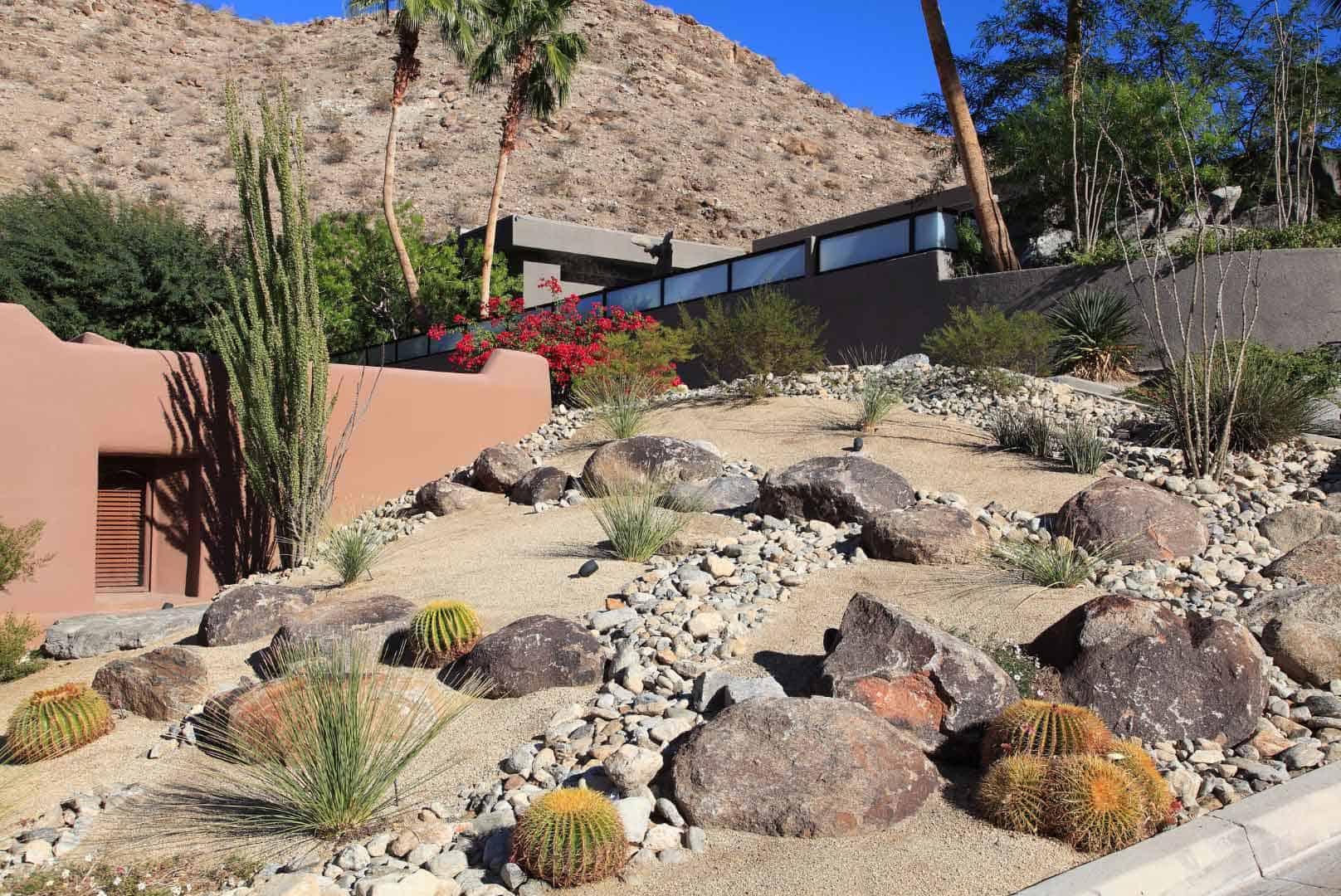
Native plants are being recognized more and more as a valuable resource for water conservation in landscaping. This is due to their ability to flourish with minimal or reduced watering, especially when compared to most exotic species, and their evolved capabilities that enhance water absorption and minimize evaporation.
Identifying Drought-Resistant Native Species
Native species of plants are ideal for sustainable gardening because they have adapted to drought through genetic changes and characteristics like longer roots and waxy leaves that enable them to survive in arid conditions. These native plant varieties, which tend to thrive best in sandy or loam soils, offer an optimal solution for water conservation in gardens.
Soil Moisture Management Techniques
A focus on using native plants in your landscape relies on soil moisture management to ensure water conservation and maintain healthy plants. Mulching can be a key part of this, acting as an insulator against evaporation while providing partial shade for the ground and adding extra hydration. But consider as well a more tightly spaced use of plants than is traditional—letting the plants be the mulch! It’s gaining ground among native landscape designers as a more aesthetically pleasing and biodiversity friendly alternative.
Using slow-watering irrigation systems like drip tubing or soaker hoses also aids in preserving the required level of wetness within soils. It’s important to consider how different types (namely sandier vs clayey varieties) may have varying levels of absorption capabilities which influence their ability to retain moisture.
Rain Gardens and Water-Smart Native Landscaping
Native plant gardens can be made more sustainable by utilizing rain garden and water-smart landscaping techniques. A rain garden is a shallow, planted depression with native plants that catches stormwater then gradually filters it into the ground. Factors such as site evaluation, soil type and vegetation selection should be taken into consideration when constructing one. Plant varieties suggested for these gardens include black chokeberry and blue flag iris, to name just a couple.
When designing a water-wise landscape, it’s crucial to plan for water conservation from the start. This involves understanding the water needs of the native plants you wish to incorporate, the average rainfall of your area, and the ways in which you can maximize water efficiency.
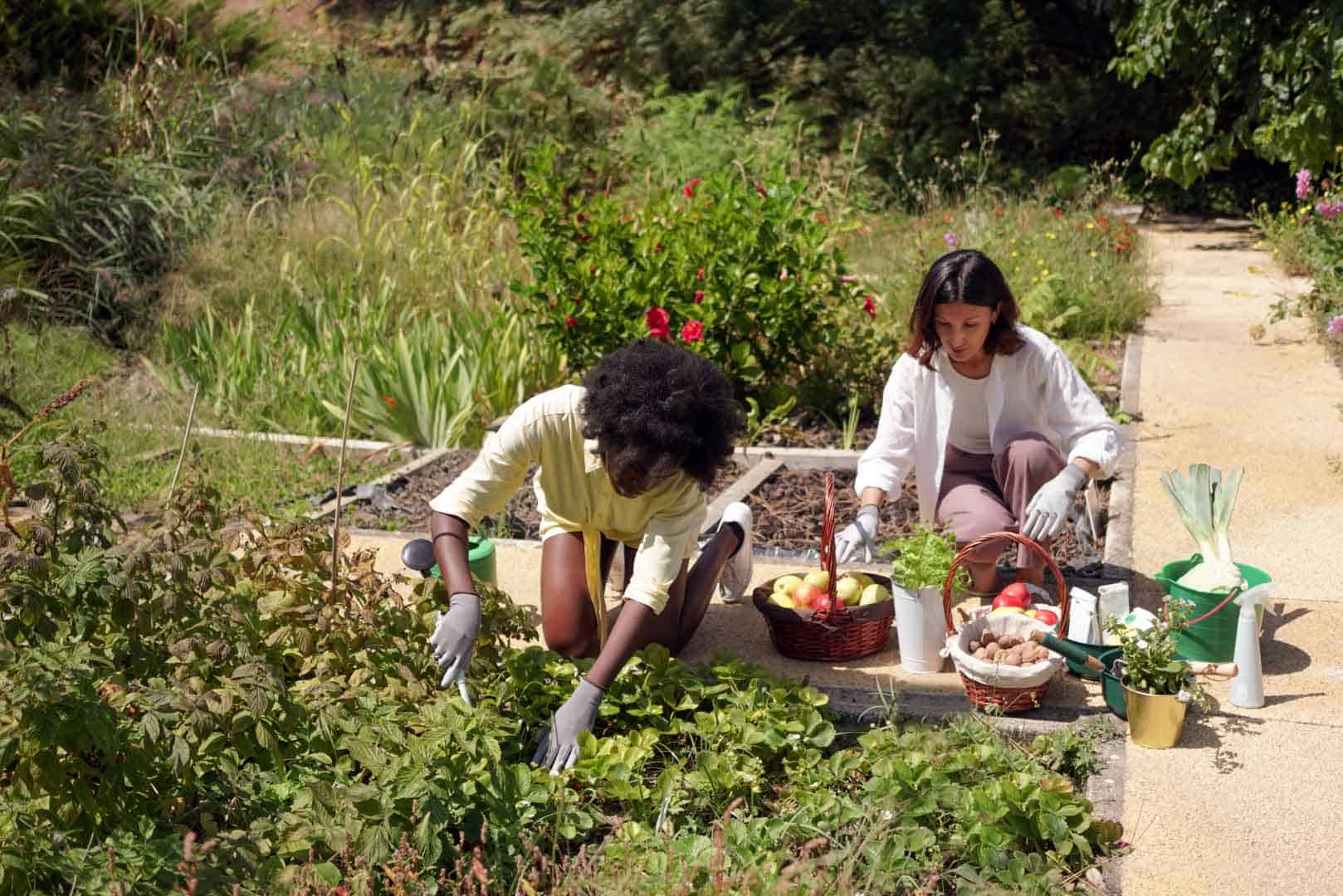
Seasonal Care and Maintenance of Native Landscapes
Understanding the seasonal care and maintenance needs of the species in your native garden is also key to long-term success. Pruning, trimming, techniques for chemical-free pest management, as well as rewarding activities like collecting seeds and propagating plants can all have a place in your gardening calendar.
Pruning and Trimming Native Plants
Most native plant gardeners look at pruning and trimming less as necessary maintenance and more as methods to help boost biodiversity and maintain some visual order in the landscape. Many native bees and other invertebrates use plant stems and leaves, for example, as places to lay their eggs, and so often gardeners will leave a portion of plant stems standing and in general “leave the leaves.” But plants that crowd public walkways or just appear too unruly for the local HOA may require intervention. In that case tools such as bonsai shears, snips, scissor sheers, and hand pruners can help you do the necessary trimming efficiently and with zero hassle.
Managing Pests and Diseases Naturally
Native plants are essential in maintaining native landscapes as they have natural protection mechanisms against pests and diseases. By offering nectar-rich, diverse flowering plants to beneficial insects, native species build communities that act defensively and offensively, repelling potential pest invaders while simultaneously attracting their predators. By incorporating a variety of native plants into your garden, you’re essentially creating a natural habitat for local insect species while disrupting the conditions that pests thrive in. This results in healthier plants overall. The inherent resilience of each species, along with the synergistic benefits of having a variety of species growing together, reduces the susceptibility to natural pathogens within the local ecosystem.
Seed Collection and Propagation
Native plant landscaping is made all the more interesting when it involves collecting and disseminating seeds. Seeds should be harvested from their natural habitat, ideally when the seed heads are mature. Note that each native species will have specific suggested times and methods for seed harvesting and cleaning, so a little research is warranted. Once collected, seeds should generally be stored in a cool, dark, dry place until it’s time to plant them again.
The propagation of native plants can take various forms. Methods such as taking softwood cuttings, utilizing tissue culture, or using unrooted clippings are among the various options for propagating native plants. Gardeners often also employ techniques such as division and using bare root systems for transplanting as well.
Finally, there are a variety of fall sowing methods that involved techniques like using milk cartons to create mini-habitats to protect germinating seeds and seedlings. We cover this elsewhere on the website.
Don’t forget that there are many companies that sell native plant seeds and can offer additional guidance on how to when to sow native seeds.
Showcasing Real Native Plant Landscaping Projects
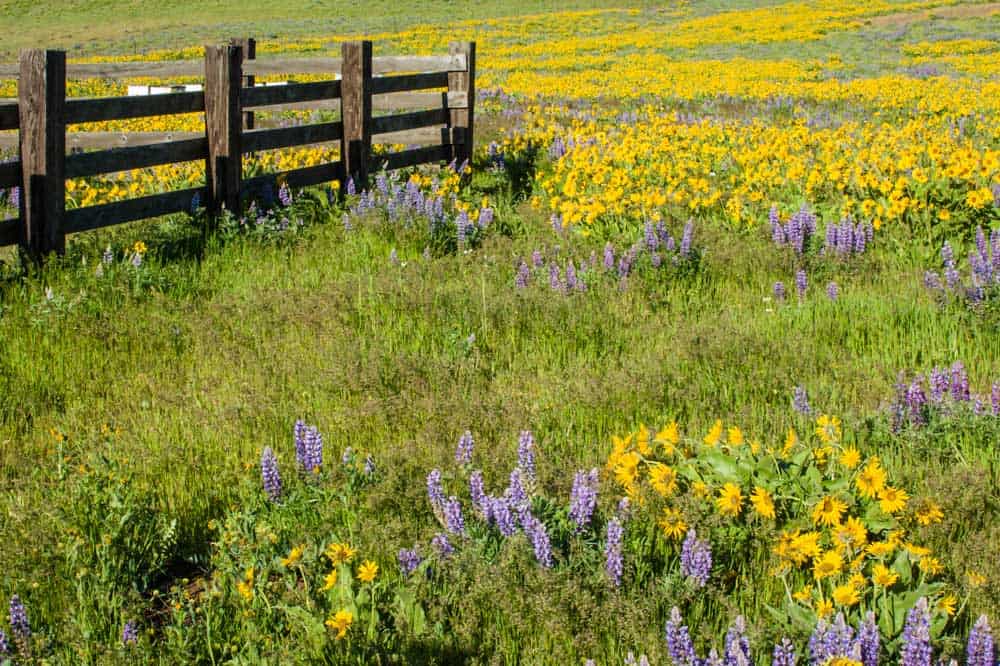
Native landscaping offers many benefits beyond the showcasing of flowering plants and native grasses that are valuable to wildlife, and a variety of real-life examples can be found to give practical insights or inspire your own native garden. From rural to urban landscapes featuring different local species, these projects demonstrate the usefulness and versatility of integrating indigenous plants into any setting.
Urban Native Garden Transformations
Native plants can have an extraordinary impact in even the most limited of spaces. One only needs to look at certain urban native gardens (and especially roof or terrace gardens) as proof. From redesigning ordinary yards into vibrant pond habitat with local species, to building sustainable xeriscape gardens with drought-tolerant native plants, these transformations demonstrate how flexible and durable indigenous flora are.
Native plant-based environments not only improve visual charm, but they can also, through the use of low-growing grasses and sedges, provide recreational green areas while establishing wildlife habitats that form natural connections between nature and human landscapes.
When it comes down to selecting suitable flowers for urban landscaping, the species choices are wide and limited mostly by local availability or access to seeds. Plants that do well in urban settings include native species as varied as groundseltree, buttonbush, eastern columbine, maidenhair ferns, and wild ginger.
Rural and Suburban Native Landscaping Examples
The beauty and practicality of native plant landscaping can be seen through the implementation of landscaping projects in both rural and urban settings. By introducing these plants, we are able to make up for habitat loss that has been experienced by wildlife populations while at the same time providing them with diverse food sources.
Popular choices when it comes to establishing a picturesque yet sustainable garden in other settings are too numerous to mention but include southern magnolia, flowering dogwood, wax myrtle, redbud, buffalo grass, blue grama grass, blue violets, Joe-Pye weed, wild strawberries, and native roses and verbenas. All these species will help boost an area’s biodiversity as well as provide various sources of nutrition for local wildlife communities.
Resources for Native Plant Enthusiasts
Enthusiasts of native plants have a multitude of resources to aid them in their gardening journey. These resources include educational content, plant vendors, and community groups that are dedicated to promoting the use of native species in landscaping projects.
Educational Materials and Workshops
There are many educational materials and workshops are available for gardeners and landscapers interested in native plants. Examples of books that can provide knowledge in this area include ‘Planting In A Post-Wild World’, ‘The Living Landscape’, ‘Garden Revolution’, ‘Climate-Wise,’ as well as ‘Gardening For The Birds’. These resources present thorough information on the subject matter of native plants, how to combine them, and creating a plant list.
For even more hands-on learning, one may join an online workshop such as the free course concerning pollinators, plants native to their location, and creating meadows sustainably. Or take part in comprehensive professional development courses like California’s four week certification program for native plant landscape specialists provided by Santa Barbara Botanic Garden.
Native Plant Nurseries and Seed Suppliers
When it comes to stocking up on plants and seeds for your garden, looking into native plant nurseries or seed suppliers is a great idea. Opting for local ones if possible can help ensure that you get the best quality available.
It’s important to research reviews of any nursery or supplier before making an order as well as double-check the accuracy of their listed plants’ names and native status. Examples of such credible businesses include Grow Native Massachusetts, Prairie Nursery, and Prairie Moon Nursery.
Community Support and Networking
Connecting with fellow plant lovers to share tips and experiences is made easier through the help of community groups. Online discussion boards, such as Wild Ones chapter native plants Facebook pages, Long Island Native Plant Gardening Group, or Theodore Payne Foundation for Wild Flowers & Native Plants, can be a great source of knowledge for those looking into native plants gardening. Local garden clubs can also be an excellent way to gain specific information regarding your region’s wildlife while enjoying support from other passionate gardeners who have resources at their disposal.

Summary
With a range of available resources, such as tutorials and local networks, to assist you on your journey towards establishing an effective native garden, it is possible to create beautiful and sustainable native plant landscaping that contributes positively to the regional ecosystem. Grasping the uniqueness of native plants, employing effective design strategies for their cultivation in gardens, and managing water use efficiently across all seasons are all crucial steps. If done correctly, these efforts will create thriving natural sanctuaries teeming with biodiversity!
Frequently Asked Questions
How do you start with including native plants in a garden?
For creating a native garden, start by examining the surroundings and working out what you want in terms of layout. Second, consider any soil prep (which is always not a requirement), then start a list of suitable indigenous plants based on the available sources and expert advice. Learn the characteristics of each plant, including light, water, and spacing needs, as well as bloom times and any special care needs, then lay out a design in your project area that promises the most naturalistic, aesthetically pleasing, and highest-performing results.
What is native plant gardening called?
Native gardening, also referred to as natural landscaping or native plant landscaping and sometimes as sustainable gardening and even xeriscaping (the terms often overlap types of garden design), always consists of planting native species historically found in the same geographic area prior to the influence of European settlers. This type of garden design involves adding vegetation that is native to the specific environment and likely to thrive and produce the highest biodiversity benefits.
What are the disadvantages of native plant landscaping?
When planting native plants, there may be a limited variety of species available and the growth rate can typically take longer than non-native plants. Despite these potential drawbacks to using this type of vegetation for landscaping or other purposes, it remains a viable option.
What is the ecological importance of native plants in landscaping?
Landscaping with native plants is essential for the environment as it helps provide food sources for birds and various invertebrates, enriches the soil for all plant species, and offer shelter for pollinators, even in partially shaded areas. Such a system contributes to maintaining ecological balance by creating balanced habitats that help support the food web. The significance of native plants lies in their diverse benefits, not only to local wildlife but also to the landscapes that incorporate them, enhancing the aesthetic appeal of homes or business sites.
What is the role of native plants in contributing to a balanced ecosystem?
Native plants have a pivotal role in sustaining an ecosystem. By providing soil erosion prevention, increasing biodiversity levels, promoting pollination activities and also providing food as well as habitat for wildlife, native plant species are incredibly important to flourishing natural habitats. Without them, our environment would be drastically different.
The coolest part of all is that you can be a contributor to this movement by adding even one or two native plants to your garden!
